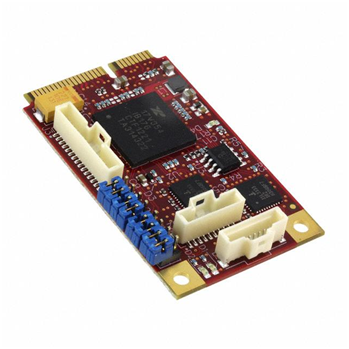FPGAs bring many advantages to embedded systems and bring many challenges.
The term "embedded systems" is used in a wide range of applications, from digital electronic watches to PCs in substation power detection systems. In most cases, the embedded system is a stand-alone and purpose-built system that should operate without the technician's authority. Many embedded systems have some type of user interface, but some operate in a "fool-like" way that requires communication with the outside world through sensors, networks, and so on. System intelligence can be implemented by a microprocessor controlled by the operating system, or most of the functionality of the system can be done by a separate dedicated chip.
The design requirements of different embedded systems are quite different. If you are designing a handheld device (such as a PDA), power consumption is a major issue; for airport or cinema ticketing equipment, reliability and security will be the primary considerations. Of course, the user interface is a major component of both systems, but many embedded systems must also be connected to sensors and actuators that require rapid response to actual stimulus and generate complex output patterns in response. Completing these actions requires a tight integration of the processing engine and system input and output ports.
Let's take a look at how the embedded system communicates with the outside world. The Palm Calculator has a very simple user interface, including a keyboard and LCD display, which does not require an interface to the sensor or communication bus. For an automotive engine control unit, although it does not have a user interface, it needs to communicate with sensors and actuators, and the vehicle network bus is also an important part. When the car is being serviced, the technician uses a device as the user interface for the car's circuit. For most modern embedded systems that require this feature, the user interface tends to be like this by adding an Ethernet port to the device and then adding Running a web server is implemented as part of the embedded system's functionality. A router is one such device that usually runs as a "fool" but can be configured through a web browser.
A variety of methods and devices are available to incorporate intelligent functionality into the system, and these methods and devices can be mixed and matched to best meet design requirements. The most flexible platform type is the combination of a microprocessor and an operating system. This architecture can take the form of a single-board machine with a real-time operating system (RTOS) core, such as an ATM or vending machine. More complex systems embed a complete PC running Windows or other operating systems, which can be connected to a standard printer using off-the-shelf network interface capabilities.
For some systems, PCs or single-board machines may be too large or too costly, and they may not meet performance requirements. At this time, the required functions can be realized by integrating an off-the-shelf application-specific integrated circuit chip (ASIC) into the design, such as a DSP, an operational amplifier, and a communication bus transceiver. The drawback of this method is that the project needs to increase the board level design. And if you use the PC platform, you only need to concentrate on the system level design.
But what if the PC can't meet the demand and there are no ready-made parts to complete the system? Not only do you have to think about board-level design, but you also include chip-level design, you need to design and build your own ASIC or use off-the-shelf configurable chips: FPGAs. One of the factors to be identified is the number of final products. If you are designing a large-volume product such as a cellular phone, it is best to develop the ASIC yourself to save design and assembly costs. However, if the target market is small, you can reduce it by using an FPGA. cost. FPGAs can change the system without having to develop a new ASIC. This is extremely beneficial if the system needs to be upgraded or modified to meet the needs of a particular customer. Today, FPGAs are widely used in embedded systems such as printers, copiers, measuring equipment, consumer electronics, and automation modules.


